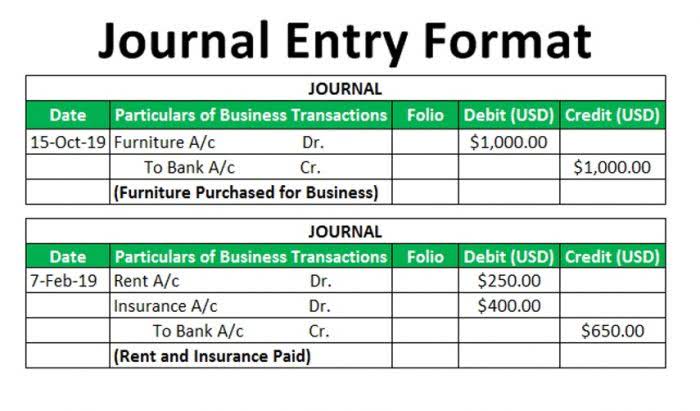In this article, we’ll explain exactly what notes payable and accounts payable are, and provide you with real examples of each. In financial statements, notes payable provide valuable information about a company’s debt levels, repayment terms, and interest expenses. They allow stakeholders to assess a company’s financial health and debt management practices, compare its performance with industry peers, and make informed investment decisions. Transparent disclosure of notes payable promotes investor confidence and ensures compliance with accounting standards.
What Are Notes Payable In Accounting
- Businesses also commonly purchase supplies and resale products from suppliers on account.
- The notes payable that are due within the next 12 months are current (short-term) liabilities while the notes payable that are due after one year are non-current (long-term) liabilities.
- On January 1st, 2023, Michael borrowed $10,000 from an investor Bob to put down a deposit on a mortgage for his new retail store.
- The general ledger account keeps track of the amount owed and any payments made towards the principal of the loan.
- Accounts payable was a significant portion of Apple’s total current liabilities of $100.8 billion .
The note payable is a written promissory note in which the maker of the note makes an unconditional promise to pay a certain amount of money after a certain predetermined period of time or on demand. The purpose of issuing a note payable is to obtain loan form a lender (i.e., banks or other financial institution) or buy something on credit. Notes payable are classified as current liabilities when the amounts are due within one year of the balance sheet date. … The portion of the debt to be paid after one year is classified as a long‐term liability. We can see that total current liabilities ultimately filters down into total liabilities of $241 billion . Sage 50cloud is a feature-rich accounting platform with tools for sales tracking, reporting, invoicing and payment processing and vendor, customer and employee management.
The notes payable are not issued to general public or traded in the market like bonds, shares or other trading securities. They are bilateral agreements between issuing company and a financial institution or a trading partner. QuickBooks Online is the browser-based version of the popular desktop accounting application.
Shareholders’ equity is the amount that would be returned to shareholders if all the company’s assets were liquidated and all its debts repaid. For businesses, it is crucial to understand the distinction between notes payable and assets, as this can impact accounting, tax, and investment decisions. By recognizing the differences and nuances surrounding notes payable, companies can ensure accurate financial reporting and maintain compliance with regulatory requirements. A note payable, also known as a negotiable instrument, is a written promise to pay a specific amount of money, usually with interest, to the lender.
For Accounts Payable
Structuring debt covenants around key financial metrics, like maintaining a low debt-to-equity ratio during growth, helps ensure financial discipline and risk control. This approach prevents over-leveraging, keeps debt levels manageable, and supports long-term stability. It encourages regular monitoring of finances, helping the company stay on track for sustainable growth and easier access to favorable financing terms in the future. These could include lower interest rates, better repayment schedules, or higher credit limits.
In financial accounting, a liability is characterized as the future sacrifices of economic benefits that a party is obliged to make to other parties as a result of past transactions or other past events. Assets are resources that a company owns with the expectation that they will provide an economic benefit in the future. That is, anything that adds value to the company’s business and is used to generate cash flow and reduce expenses is considered an asset.
This approach lets AP teams schedule payments to align with higher liquidity periods. For instance, when a retail company forecasts strong sales for Q4, it might extend payment schedules into Q1. This strategy helps effectively manage accounts payable during slower revenue months. Depending on the loan terms, notes payable may require collateral (such as equipment or assets).
On this date, National Company must record the following journal entry for the payment of principal amount (i.e., $100,000) plus interest thereon (i.e., $1,000 + $500). A zero-interest-bearing note (also known as non-interest bearing note) is a promissory note on which the interest rate is not explicitly stated. When a zero-interest-bearing note is issued, the lender lends to the borrower an amount less than the face value of the note. At maturity, the borrower repays to lender the amount equal to face vale of the note. Thus, the difference between the face value of the note and the amount lent to the borrower represents the interest charged by the lender.
- As the notes payable usually comes with the interest payment obligation, the company needs to also account for the accrued interest at the period-end adjusting entry.
- Debt is the amount of money you owe to another party or that person or company owes you.
- In this article, we’ll explain exactly what notes payable and accounts payable are, and provide you with real examples of each.
On the other hand, accounts payable typically represent amounts due to suppliers and vendors of a company. If a covenant is breached, the lender has the right to call the loan, though it may waive the breach and continue to accept periodic debt payments from the borrower. The agreement may also require collateral, such as a company-owned building, or a guarantee by either an individual or another entity. Many notes payable require formal approval by a company’s board of directors before a lender will issue funds.
Notes Payable Account on a Balance Sheet: What You Need to Know
It also shows the amount of interest paid with each installment and the remaining balance on the loan after each payment. For example, a business borrows $50,000 at an interest rate of 5 percent per year, with a schedule to pay the loan amount back in 60 monthly installments. Establishing approval workflows and fraud detection measures can prevent financial mismanagement. Businesses should align payment schedules with their cash inflows to avoid liquidity issues. Centralize Supplier Data for Better NegotiationsThe better the data you have, the better your negotiation power. These actions turn the AP function from an operational task to a strategic lever that can boost profitability and financial health.
What Is A Note Payable?
What distinguishes a note payable from other liabilities is that it is issued as a promissory note. On the other hand, accounts payable are debts a company owes to its suppliers. For example, a company records products and services it orders from vendors for which it receives an invoice in return as accounts payable, a liability on its balance sheet. Businesses use notes payable when they borrow money from a lender like a bank, financial institution, or individual.
Differences Between Notes Payable vs. Accounts Payable
It has extensive reporting functions, multi-user plans and an intuitive interface. Interest expense will need to be entered and paid each quarter for the life of the note, which is two years. Best Of We’ve tested, evaluated and curated the best software solutions for your specific business needs. Imagine that XYZ Manufacturing Company needs to purchase a piece of machinery costing $50,000. However, the company doesn’t have enough cash on hand to buy the machine outright.
The Importance of Emergency Funds and How to Build Yours
Any Notes Payable with a repayment term of over one year are considered long-term liabilities. Even so, the typical repayment period of notes payable rarely what happens to assets if the company pays for notes payable exceeds five years. On February 1, 2019, the company must charge the remaining balance of discount on notes payable to expense by making the following journal entry.
Businesses often rely on various forms of debt to finance operations, and notes payable are a significant component of this financial strategy. These written promises to pay a specific amount at a future date can influence a company’s liquidity, creditworthiness, and overall financial health. The long term-notes payable are very similar to bonds payable because their principle amount is due on maturity but the interest thereon is usually paid during the life of the note. On a company’s balance sheet, the long term-notes appear in long-term liabilities section.
A business may borrow money from a bank, vendor, or individual to finance operations on a temporary or long-term basis or to purchase assets. Notes Payable is used to keep track of amounts that are owed as short-term or long-term business loans. Notes payable is a loan contract that specifies the principal (amount of the loan), the interest rate stated as an annual percentage, and the terms stated in number of days, months, or years. Notes payable may be either short term (less than one year) or long term (more than one year). However, it should be noted that the current portion of a long term note payable is classified as a current liability.
The account Notes Payable is a liability account in which a borrower’s written promise to pay a lender is recorded. Any business loan payments and outstanding amounts should be marked on the balance sheet as part of the notes payable account. Here’s a closer look at what the notes payable account is, and what function it serves in business accounting. Notes Payable is a ledger account prepared by an accountant for recording transactions that involve borrowing of money.

















